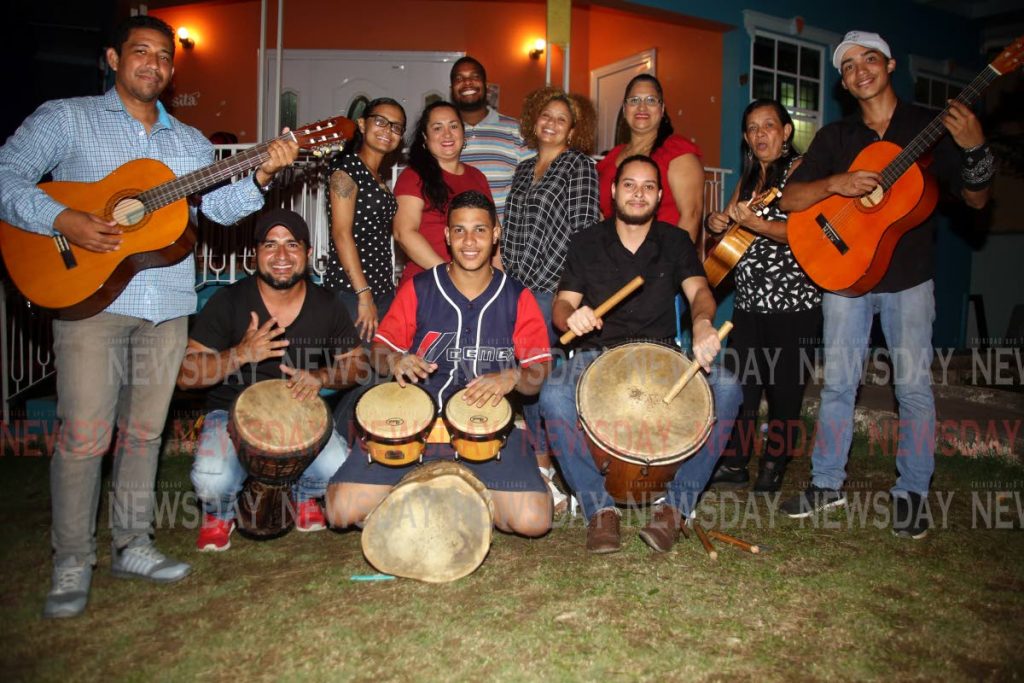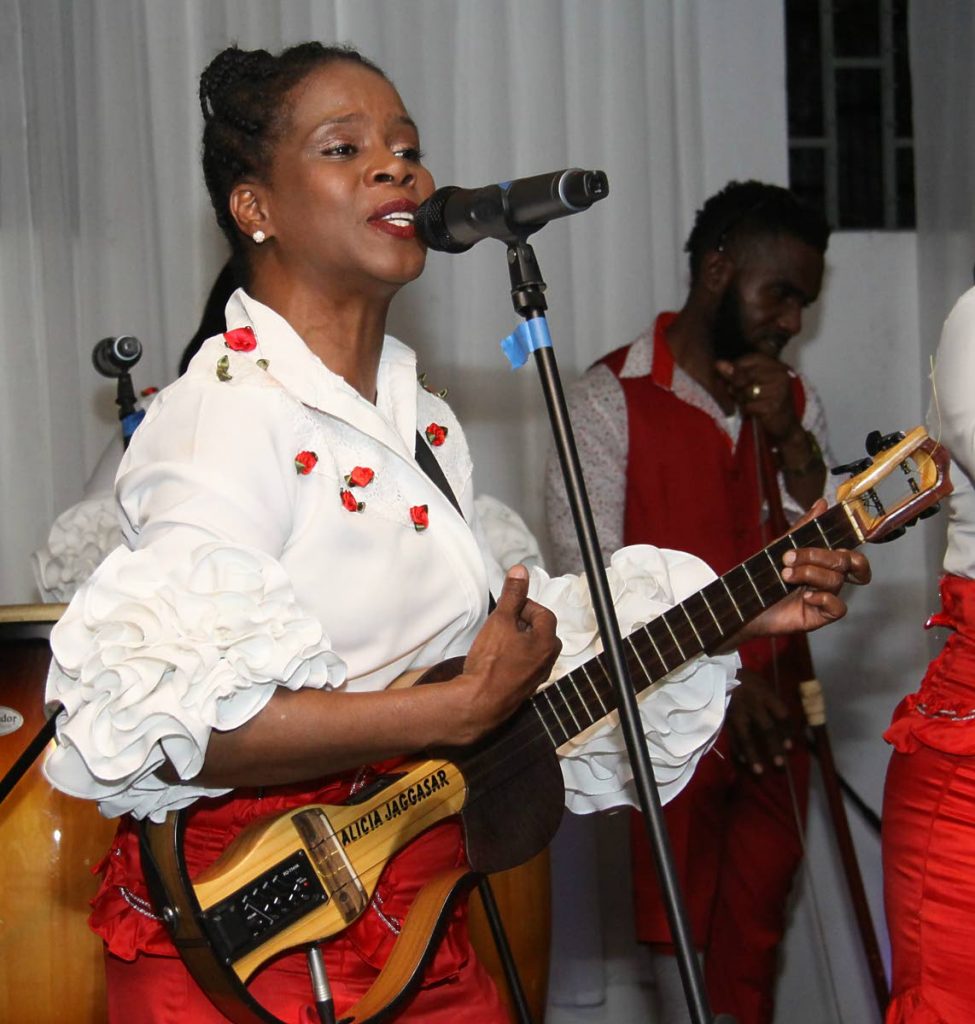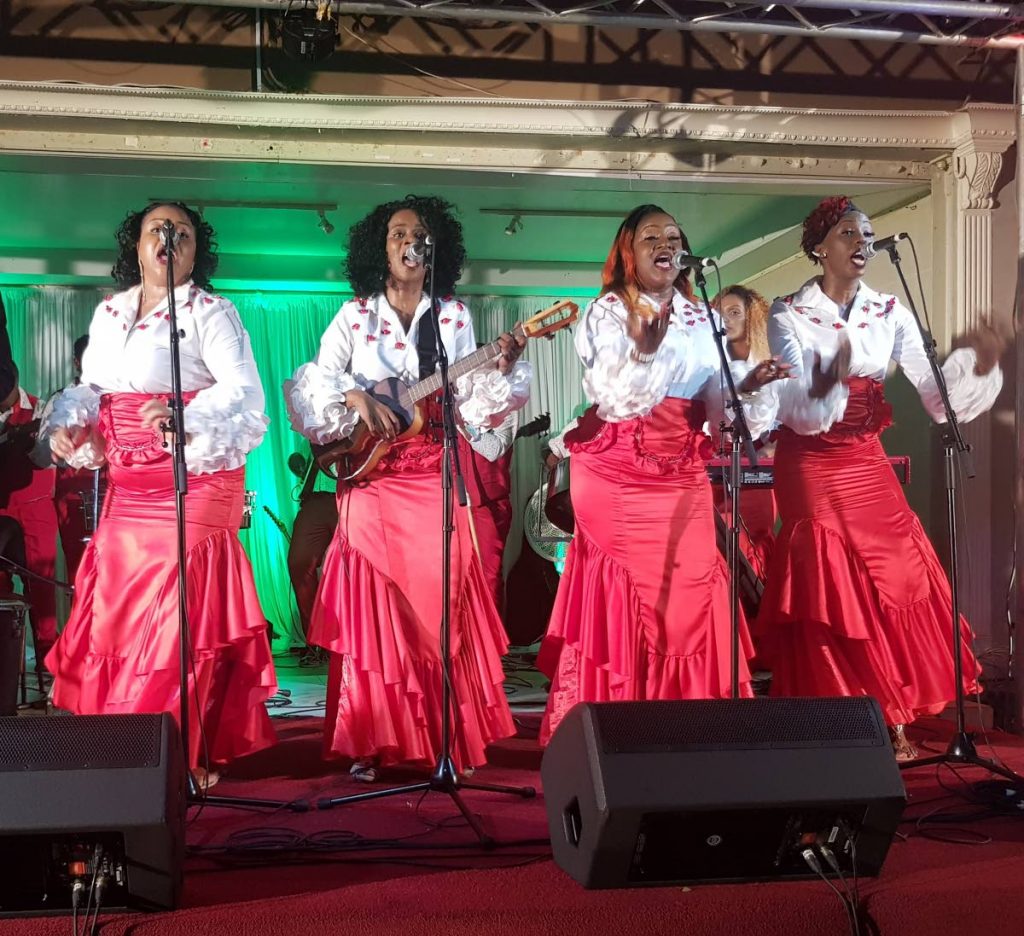Parang, parang!

The National Parang Association of TT (NPATT) is ready to set the trends for parang, steering its evolution while preserving and promoting the artform.
Alicia Jagassar, president of the association, said, “We have come to the realisation that we can’t say we just want it to remain like in the days of Papa Goon and Daisy Voisin. What we want to do is preserve it while allowing for it to evolve.”
She said NPATT is trying to cause a mental shift so people will stop thinking of parang in terms of “rum and ponche de creme.” She said it wants to build back the Spanish-influenced music to the point that community events are held and hundreds of people of all ages come out to an evening of parang.
To this end, the association has numerous plans and activities.
If you’re looking for traditional parang, the Christmas 2019 festival, Come All Ye Faithful, is for you. In November and December the association’s Parang Crusade will visit several communities and each installment will have a different theme. There, eight bands will perform and there will be stalls with food and parang paraphernalia.
The festival’s finale, Regresa a mí (Return to Me), will be held on December 14 at the Arima Velodrome.
“We are telling all the parranderos, all the patrons, return to the parang. Return to the shows. Let's get it back to the way it was.”
Jagassar noted that there has not been a national competition for the past few years, so bands were not limited in their music. For example, she said, in competitions aguinaldos had to consist of four lines with six syllables per line, and had to relate to the birth of Jesus Christ.
Instead, the association wants to give parang groups an outlet to express the other types of music they do including serenal, anunciacion, nacimiento, guarapo, castillan, manzanare, estribillio and despidida. This could consist of different arrangements of well-known songs, Latin, and soca parang, and other styles that do not relate to Christmas.
“It gives people an opportunity to explore the traditional form, but also introduce categories that allow them to step out of that tradition. There are some parang icons like Henry Pereira, who is a prolific writer, who actually stepped out of it, but of course, not to compete.”
She said this makes parang more relatable, both to younger listeners and parranderos. She said the genre was seeing an influx of young people coming out of schools and forming bands.
O“We are seeing the preservation of parang with the young people. And it’s beautiful to see that the junior and senior parang (competitions) are just increasing in numbers.”
Parang fusions are also being encouraged, especially from January to July. She said some people love Christmas in TT but miss it because they visit for Carnival. She said many paranderos also sing calypso and soca so the association challenges them to change some of the songs to a Latin style to create "Carni parang" and bring parang out of the Christmas season.
Another activity was Parang History Month in September at MovieTowne. There, different aspects of the artform such as the instruments, icons, house, and the evolution were showcased.
The association also started a series called Parang Juke Box at Kaiso Blues Café, which was expected to be held again next year. Bands would perform for 30 minutes, then patrons could request a song from a list and the band would play it for $5. There was also the Parang Cooler Picnic at the Green Meadows in Santa Cruz on November 3, and the Maypole Festival catering to children.
In addition, the association is planning to launch a national parang orchestra, Sinfonía de Parranda, at its 2020 Easter parang event.
Jagassar said in the last few decades there has been a movement to sing better Spanish in parang songs, saying parranderos sang a lot of broken Spanish, or Spanish patois. However, with the popularity of Latin music, the influx of Spanish-speaking people, and updating the lyrics of older songs, many bands are more conscious of their Spanish diction and composition.

Alicia Jagassar, National Parang Association president and lead singer of Los Alumnos de San Juan. - Angelo Marcelle
“It’s just like us in TT. When we go to, maybe the countryside, and we hear people talk, people from other English-speaking countries would want to know what on earth they saying – but we understand it. Even some of the slang we use, other Trinis would not know what it is. Back then, it was like that.”
She added that some older parranderos' speech became muddled or they forgot the words and so lyrics were lost. Other parranderos tried to get the sense of the songs and wrote new verses or filled in the gaps between words.
“Because of that, you started to get that interest in singing the right thing.
"Now we have a lot of Venezuelans, Cubans, Colombians, and we are seeing the exchanges. The injections of songs like Marc Anthony’s Vivir Mi Vida and Despacito – all these things in recent past have really had an impact on the parranderos.”

Jagassar said for years Los Alumnos de San Juan had Spanish tutors to make sure they were singing the right thing. As a composer and lead singer of the band, she also took Spanish classes. And other bands did the same. She added that younger people getting involved in parang pay attention to using standard Spanish, as many of them were Spanish students.
With all the effort being put into the music, she said people can no longer say parranderos are people who come to your house to make noise and get drunk.
“When you see and hear the bands, they are sounding so good. They are well rehearsed, their attire, the value that they place on parang and themselves as performers is just increasing.”
In terms of the influence of Spanish-speaking people, Jagassar said Venezuela has always influenced parang. Many parang songs are Venezuelan songs that local bands arranged to fit TT parang. There are also many Venezuelan members already in parang groups singing and composing music.

She said the Hispanic Cultural Centre in Arima has a parranda band, Herencia Venezolana (Venezuelan Heritage), made up of Venezuelans. NPATT has included the band in the association’s Instrumental Showdown on November 16 and invited it to be special guests at the final night of the festival.
She said the band will be playing its parranda rather than TT parang, and the association intends to invite it to join the NPATT at some point.
“It’s a way of reaching out to all the Venezuelans who are here to come and see that they could be part of this too, they don’t need to be excluded, and we could learn from them...
“(Venezuela) is not a new influence. It is something that has been there from inception. A lot of the local parang bands play a lot of Venezuelan songs, so we wouldn’t come and ask them to do anything we are doing. We will keep that contrast and blend it, try to get that moment when our parranderos can actually fuse with them on stage.”
Originally, parranderos were like carol-singers, going from house to house or venue to venue singing the message of Christmas.
Jagassar said it still happens in more rural areas, what she called “real parang areas,” such as Lopinot, Rio Claro, and Valencia. Parang is getting commercial, she said,which left bands busy with booked jobs, and so the practice dwindled over the years.
However, NPATT is trying to bring that back, and wants to create a band consisting of members of different parang bands to go house-to-house in different areas to bring back the spontaneity of paranging.
At present, she said, people plan parang. They call a friend and tell them they are coming to parang, or someone having a lime invites a parang band to play. She said planned parang took away the joy of someone showing up at your door.
She expressed this in her new song We Outside, which will be released this week. The lyrics say, “This year we paranging like long time. We not planning no parang lime. Is house to house we going. Doh call and ask. No. This is a parang advisory. We will be visiting anybody.”
The association is also embracing “the offspring of parang,” soca parang and parang soca, even though some people were sticklers for the traditional music. At the end of Parang History Month, the association got the genres involved, and a few bands will have parang soca and soca parang at the final night of the festival.
Jagassar said both types of parang have been around for years and many young people think they are parang. She explained that soca parang had a soca base, such as Baron’s Spanish Woman; while parang soca had a parang rhythm as the base, like Crazy’s Maria and Scrunter’s Anita.
One of the reasons for including the styles was an attempt to steer people towards the well-arranged songs with good lyrics instead of the more ridiculous songs that are popular.
“It’s not that soca parang is coming to take over. All soca parang is not bad, even though that’s the ones that are getting the airplay. It’s what we allow to happen to our artform.
"So instead of leaving them out, let’s embrace them, because some of these people who sing it are icons. Every Christmas we look forward to hearing them."


Comments
"Parang, parang!"